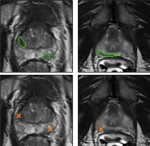UCLA researchers developed a machine learning algorithm to aid radiologists in diagnosing prostate cancer.
Ruiming Cao, a graduate student in computer science, was the main developer of FocalNet, an artificial intelligence system which uses data from magnetic resonance imaging to detect and assess prostate cancer.
Steven Raman, a radiologist and a senior author of the study, said prostate cancer diagnoses and assessments usually do not use imaging technology like MRI and instead use blood tests and biopsies.
Raman, along with UCLA urologists and pathologists, had previously developed a method of using MRI to collect data on prostate cancer. This allows doctors to bypass the risk of infection associated with biopsies. The data the MRI collected in that study was used to develop the algorithms for FocalNet.
Raman said most men develop prostate cancer at some point in their lives, but most do not require intervention. However, the high frequency of incorrect diagnoses causes many patients to undergo unnecessary operations.
Raman added there is a 30-40% chance of misdiagnosing the severity of prostate cancers. Improving diagnostic procedures could lead to fewer unnecessary interventions such as surgeries.
Kyunghyun Sung, an assistant professor of radiology and senior author of the study, said the technology could potentially reduce how long radiologists take to study the cancer with MRI machines and make accurate diagnostics using MRI scans. This could make the diagnosis procedure cheaper for patients, he said.
Machine learning algorithms have the potential to make the imaging process two or three times faster, said Dieter Enzmann, chair of radiology at UCLA and a senior author of the study.
Raman said one of the main goals of FocalNet is to help radiologists with less experience make more accurate diagnoses.
“It may take thousands of scans for them to achieve a level of expertise that is required, and they may never see those thousands of scans,” Raman said. “(FocalNet) takes someone at an entry level and makes them achieve at a level that is much higher than a level they may be capable of alone based on their inability to access the experiences.”
Sung said the study focused on comparing FocalNet’s accuracy to that of radiologists and found that the two were comparable. However, FocalNet still needs to receive approval from the Food and Drug Administration before it is ready to be used on patients, he said.
Enzmann said he thinks this new technology should be incorporated into radiologist training in the future.
“It can only help us if we understand the tools,” said Enzmann. “Radiologists need to understand in what situations it is appropriate to use (the machine learning technology) because as powerful as they are, they are only as good as the training sets.”
